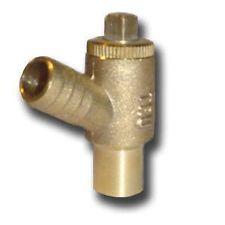I am thinking of attempting a mains flush of my open vented central heating, as decsrived in the useful thread here: //www.diynot.com/forums/viewtopic.php?p=253454
However I have a few questions I am hoping someone can help with.
- My boiler doesnt seem to have any isolation valves, either inside it, or in the flow and return pipes leading to it. Is that normal? I guess this is the first thing I'd have to do so I avoid pumping crud through the boiler?
- I need to isolate the F&E tank. Where would the venting pipe from the boiler come from? Would it be the top of the hot water cylinder? (I can't see in the attic as the tank is hidden from view)
- I need to add a drain off point to the existing pipework in the cellar. What's the best way to do that? I can't find a simple drain off valve that fits in line with the existing pipe
Many thanks for any help. I hope my questions make sense.
However I have a few questions I am hoping someone can help with.
- My boiler doesnt seem to have any isolation valves, either inside it, or in the flow and return pipes leading to it. Is that normal? I guess this is the first thing I'd have to do so I avoid pumping crud through the boiler?
- I need to isolate the F&E tank. Where would the venting pipe from the boiler come from? Would it be the top of the hot water cylinder? (I can't see in the attic as the tank is hidden from view)
- I need to add a drain off point to the existing pipework in the cellar. What's the best way to do that? I can't find a simple drain off valve that fits in line with the existing pipe
Many thanks for any help. I hope my questions make sense.


